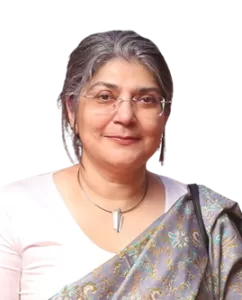IIT Roorkee Unveils Metallurgical Marvels Tracing India’s Ancient
4 min read Roorkee, April 03, 2024: The unveiling of “Archaeometallurgy of India from Rigveda to Vālmīki Rāmāyaṇa” marks a major milestone within the exploration of India’s historic metallurgical legacy. Authored by Shri. Satya Narain and Shri. Navin Chandra, each esteemed alumni of IIT Roorkee, this groundbreaking work delves deep into the texts for the interval Rigveda to the Vālmīki Rāmāyaṇa to unearth the secrets and techniques of historic Indian metallurgy.
Roorkee, April 03, 2024: The unveiling of “Archaeometallurgy of India from Rigveda to Vālmīki Rāmāyaṇa” marks a major milestone within the exploration of India’s historic metallurgical legacy. Authored by Shri. Satya Narain and Shri. Navin Chandra, each esteemed alumni of IIT Roorkee, this groundbreaking work delves deep into the texts for the interval Rigveda to the Vālmīki Rāmāyaṇa to unearth the secrets and techniques of historic Indian metallurgy.
At the guts of this scholarly endeavour lies a profound dedication to preserving and deciphering India’s wealthy heritage texts. By presenting unique Sanskrit texts alongside English translations, the authors open a gateway to the treasures of historic data, inviting readers to journey by the annals of time and unravel the scientific acumen of historic Indians.
The meticulous evaluation of over 400 “textual metallic proof knowledge” by conceptualized frameworks affords a structured strategy that results in understanding how the six metals of antiquity had been found, occurred, sourced, produced, and formed into the metallic objects within the Vedic Civilization. Through their analysis, the authors make clear how Ancient India entered into the “Metal Age” by discovering hiraṇya (gold) as the primary metallic and āyas because the second metallic, and Ancient India transitioned from the “Neolithic Age” to the “Metal Age” through the Early Rigvedic Period. Subsequently, 4 new metals – silver (rajat), lead (sīsaṃ), copper (loha or lohita), and tin (trapu) had been found through the Late Vedic Period. After that, no different new metallic was found, however early bronze (kāṃsya) was invented throughout the Rāmāyaṇic Period. The minerals/ores of any of the six recognized metals weren’t recognized, resulting in the inference that the metallurgy of the recognized metals was on the “Native Stage” and didn’t advance to the “Ore Smelting Stage.”
The Rigveda, the oldest textual content within the World, makes use of the time period “āyas” about which numerous views exist concerning its that means. Interpreting the time period “āyas” within the Rigveda as referring to “meteoric ironstone” reveals an enlightening perception which challenges typical narratives concerning the timelines at which iron first seems within the archaeological report of India
This work additionally unveils an enigmatic truth: regardless of its discovery, copper remained unused for crafting home objects like beads, vessels, ornaments, and instruments. The conspicuous absence of copper objects all through the Vedic Civilization was not a matter of likelihood however a major proof of excessive chronological significance within the historical past of historic India.
The new perspective concerning the that means of “āyas” and the conspicuous absence of copper objects throughout Vedic Civilization establishes historic metallurgy of India was distinctive within the World and paves the way in which for a deeper understanding of the historical past of the historic metallurgy of India. This work proposes that the “Metal Age” of the Vedic Civilization predates the “Iron Age” of the Post-Indus Valley Civilization in addition to the “Chalcolithic Age” and “Bronze Age” of the Indus Valley Civilization. The proposed new relative chronology framework reconstructs a grand narrative of the distinctive historic metallurgy of India, which properly reconciles the “textual metallic proof knowledge” of the Vedic Civilization with the “archaeological metallic proof knowledge” of the Indus Valley Civilization.
By establishing the Centre for Indian Knowledge Systems, providing programs on studying the Sanskrit Language and analysis endeavours targeted on Indian Knowledge Systems (IKS), the IIT Roorkee goals to bridge the hole between conventional knowledge and trendy academia. The launch of the ebook “Archaeometallurgy of India from Rigveda to Vālmīki Rāmāyaṇa” coincides with IIT Roorkee’s broader initiative to combine Indian Knowledge Systems (IKS) into modern training and analysis. IIT Roorkee’s dedication to leveraging historic knowledge for addressing modern challenges is underscored by ongoing initiatives such because the “Adaptation of Indigenous and Local Knowledge Systems and Fintech Solutions for Comprehensive Tribal Development in Chhattisgarh State.”
Prof. Okay.Okay. Pant, Director of IIT Roorkee, expressed enthusiasm for the ebook’s launch, emphasizing its twin significance in illuminating historic metallurgical practices and galvanizing future generations of students to discover India’s wealthy mental heritage, he talked about, “Not solely does the ebook make clear the superior metallurgical practices of historic India, however it additionally serves as an invite for students to delve deeper into our wealthy heritage by bridging the hole between conventional Sanskrit texts and trendy evaluation, we hope to encourage a brand new era of researchers to discover the depths of India’s historic data methods and honour the enduring legacy of India’s mental heritage.”
As the legacy of India’s historic data methods continues to thrive, “Archaeometallurgy of India from Rigveda to Vālmīki Rāmāyaṇa” stands as a beacon of enlightenment, guiding us towards a deeper appreciation of the fantastic cultural inheritance of India.
The ebook “Archaeometallurgy of India from Rigveda to Vālmīki Rāmāyaṇa” might be quickly out there on the IIT Roorkee’s IKS web site and is on the market on different on-line platforms.






